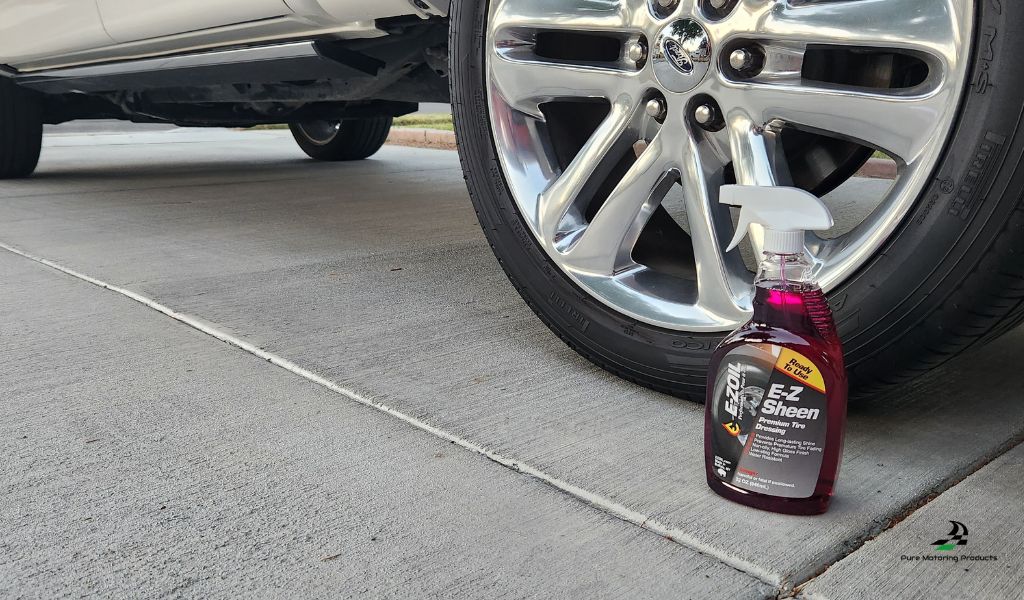Polish vs Wax & Dressing vs Shine– What is the Difference?

Taking care of your vehicle includes interior care, under the hood maintenance, and exterior attention. To keep your vehicle working for you, make sure you keep up on repairs and regular maintenance with a trusted mechanic. The interior of your vehicle will also require attention to maintain a nice appearance and to keep it lasting a long time. You can do this yourself, but if you keep putting it off, it may be time to hire a detailer. The exterior of your vehicle can also look great with proper washing, polishing, and waxing. But wait, isn’t polishing and waxing the same thing? Read on to find out.
Car Polish
Polish will add shine to a dull car and can bring back much of the depth of color in paint that has weathered or is just getting older. Most polishes contain tiny abrasives that are suspended in a cream or liquid base. These fine abrasives help carefully remove surface imperfections, such as small scratches, watermarks, or swirl marks. There are lighter polishes that are good for cars with softer paint, and there are heavy polishes for cars that have hard paint. The abrasives in polish remove a slight amount of exterior paint, revealing the more vibrant and blemish-free layer below. Because of this, you want to be sure you get the right polish for your vehicle. Polish is typically applied by hand or with an orbital buffer, but only after a good, quality cleaning and drying. Apply the polish to small sections at a time in a circular motion. If you’re using a buffer, stay consistent and buff until the polish disappears. If excess polish remains, carefully remove it with a dry, microfiber towel. Car polish should not be used more than once or twice per year. Too much polishing can end up damaging the paint.
Car Wax
Wax is a clear coat of protection between your car’s paint and the exterior elements. It helps protect from water, dirt, and UV rays and helps keep your vehicle cleaner longer. Like polish, it adds shine, but it does not have abrasives to buff away imperfections. Car wax is commonly made with natural or synthetic ingredients, such as beeswax or polymer resins, and it typically comes in liquid or solid forms. Wax can be applied by hand using a foam applicator, or you can also use an orbital buffer. Again, you must start with a truly clean car or it may leave streaks, or worse, scratch the paint. Apply in small sections in thin layers, slightly overlapping each layer. If you use a buffer, be gentle to avoid damaging the paint. Wax can be applied about every three months, but if your vehicle is regularly exposed to damaging conditions, every month or two may be more beneficial. It’s also a good idea to wax your car after you’ve polished it to protect the polish job and make it last.
Tire Dressing & Tire Shine
Tire dressing and tire shine are both used to improve the appearance of tires. There are, however, some significant differences between the two just like car polish and car wax. Most tire dressings are water-based products with wax or polymer in them. It is less slick than tire shine and gives tires a more matte or satin appearance. Additionally, tire dressing is less prone to streak or rub off and is simpler to apply uniformly. Tire shine is often a silicone-containing solvent-based solution. Although it makes tires bright and glossy, it can also make them slick. Additionally, tire shine can be challenging to apply properly and may easily rub off.
Ultimately, the best choice for you will depend on your individual needs and preferences. Before tire dressing, polishing and/or waxing, you will need to clean your car with a high-quality wash that removes all dirt, grime, smoke residue, grease, and water spots. Visit Pure Motoring Products for the best vehicle wash on the market.
